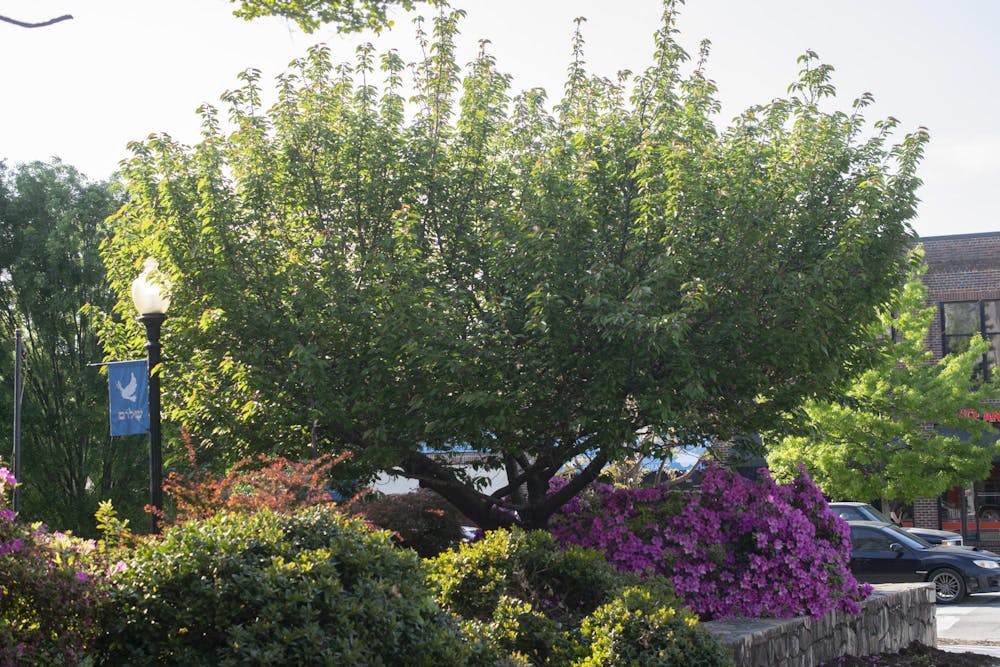If the giant layer of pollen coating anything and everything on campus didn’t alert you, spring has arrived. For me, this time of the year is marked not only by the returning presence of pollen but by one of my least favorite plants: the Bradford pear tree.
If you’ve spent any time in N.C., you’ve likely seen a Bradford pear, most recognizable for their white flowers that bloom in early spring. The tree, which is native to East Asia, was introduced commercially to the United States in the 1960s and has since become wildly popular for a number of reasons: they’re cheap, they grow quickly and they can survive in poor soil.
The Bradford pear is an invasive species. Because it’s not native to the region, it lacks the natural checks and balances that would normally keep its spread under control. This gives it a major advantage over native plants, which it often outcompetes by blooming early in the spring and growing rapidly, soaking up sunlight and resources before other plants even have a chance. In some areas, the Bradford pear has taken over so completely that it's basically created food deserts for animals. Put simply, the tree sucks.
As an N.C. native, I have a long history with the Bradford pear. They were all over my town growing up, outside of my elementary and middle school. So, I am unfortunately quite familiar with the aroma of the Bradford pear, a stench aptly and eloquently described by The New York Times as a combination of “semen and rotting flesh.” Others have likened it to urine or dead fish. I’m haunted by memories of waiting to be picked up from school or walking out to recess and being bombarded by the smell from the rows of Bradford pears aligning the school parking lot.
What’s always frustrated me about the Bradford pear is not just the stink, but the fact that we choose to put up with it for some reason. It’s not like the tree is exceptionally beautiful or provides some unique benefit to the environment — it does just the opposite — that could maybe justify enduring the stench.
But the Bradford pear doesn't do that, and yet we still subject ourselves to it. We accept it as if it’s just some unchangeable law of nature, when in reality the tree is literally at war with nature.
Thankfully, many have begun to see the light and have started to turn on the Bradford pear. Ohio, Pennsylvania and South Carolina have all passed bans on the sale and planting of this nightmare tree. On a local level, N.C. State has partnered with the N.C. Forest Service, N.C. Urban Forest Council and N.C. Wildlife Federation to start a Bradford pear bounty, where a new, native tree is offered in exchange for cutting down a Bradford pear.
As a day-one anti-Brad, I thoroughly endorse these anti-Bradford pear measures and think that UNC should join N.C. State in the war against them. We should expand this program state-wide and eventually country-wide. There are plenty of other non-invasive, native trees that can replicate every desired trait the Bradford pear has while having none of their many downsides. Dogwoods, crape myrtles, star magnolias, cherry blossoms and eastern redbuds are good examples of flowering trees that aren’t invasive nor harmful to the environment.
If the Bradford pear has a million haters, I'm one of them. If the Bradford pear has one hater, it's me. If the Bradford pear has zero haters, I’m dead.




